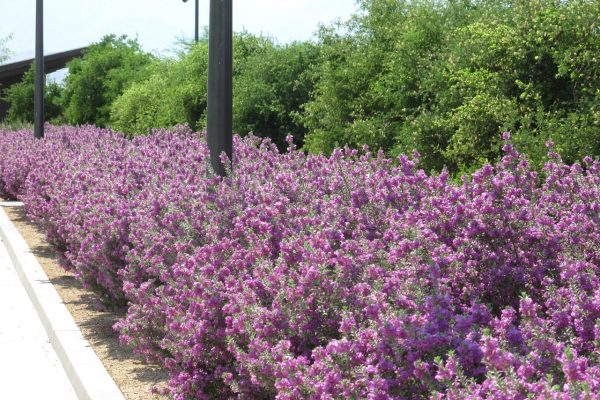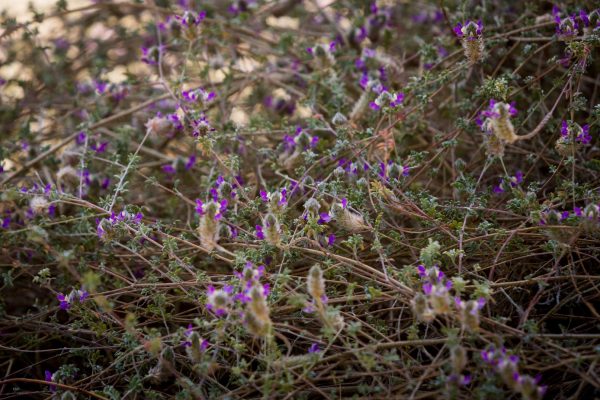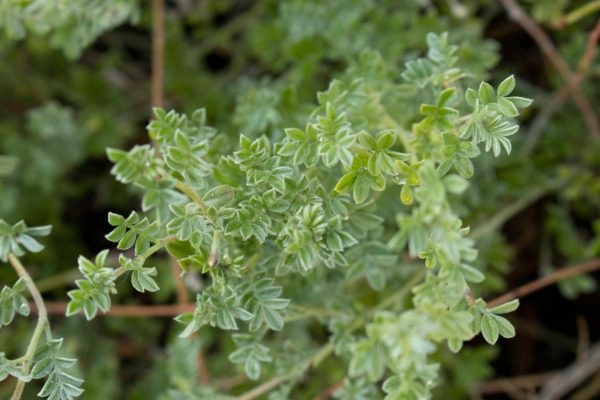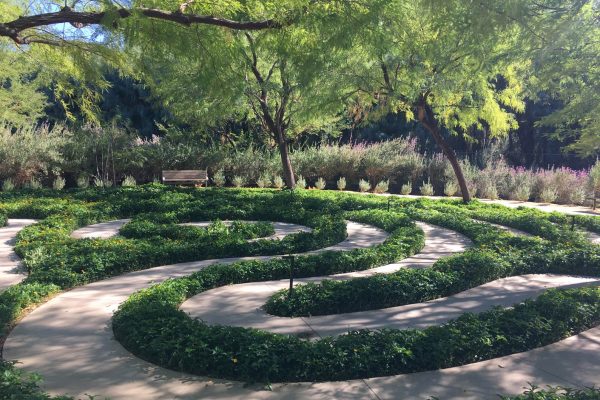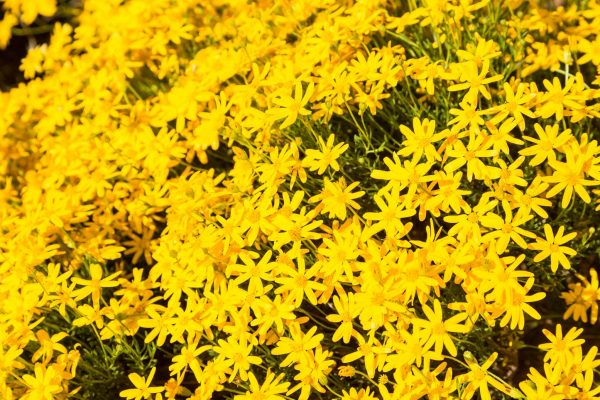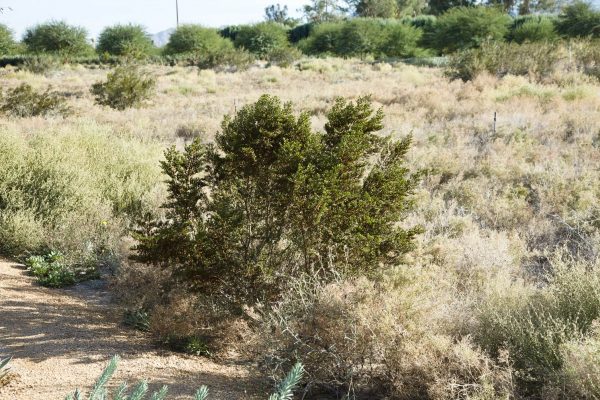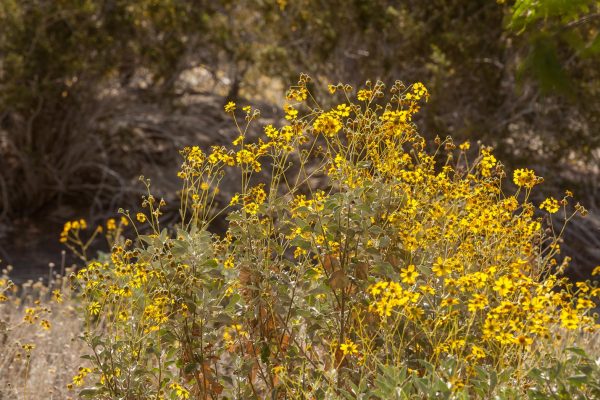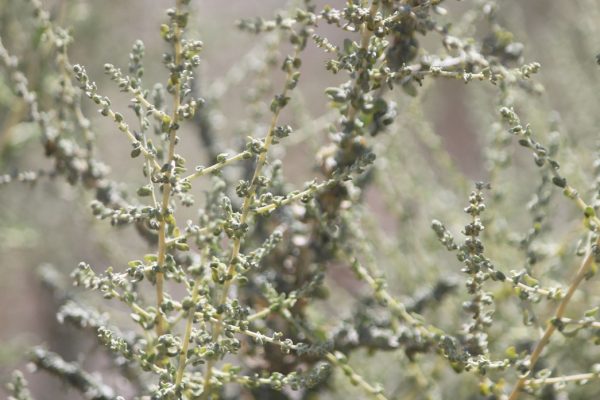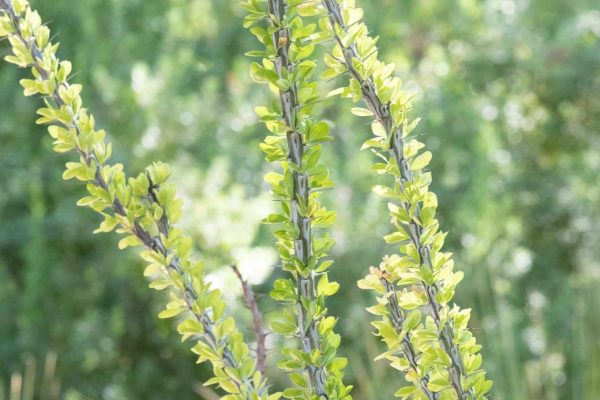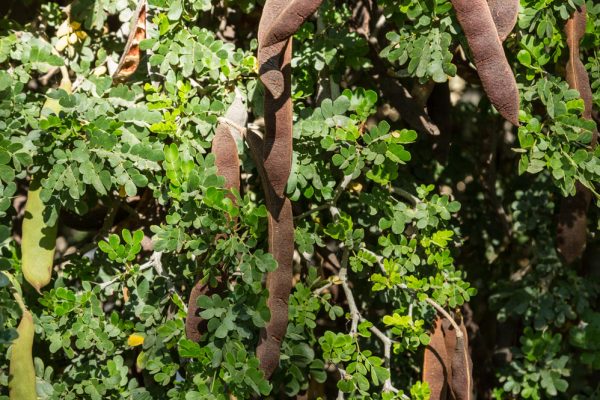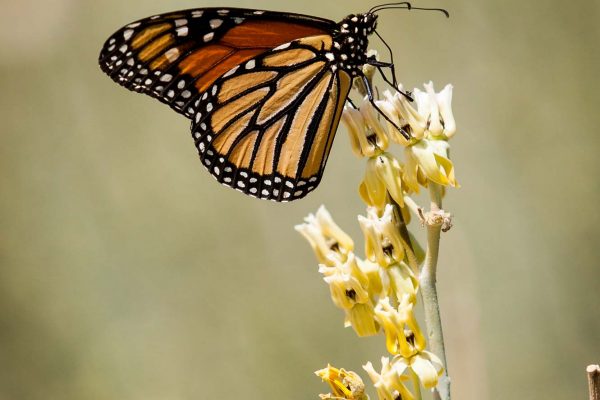Thousands of Milkweeds were planted at Sunnylands during the original installation of the gardens prior to the 2012 opening. And even more were added during the addition of the administrative campus and service road in 2017. Planted mostly in single specimen beds, this tough desert native can be found in every part of the gardens.
When not in bloom, Desert Milkweed may appear like a cluster of reeds. Unlike many other milkweeds, this desert variety doesn’t form large leaves, instead its leaves are narrow and hair-like. Since large leaves can result in water loss through transpiration, having small leaves is a common desert trait. Many trees in the desert use this same small-leaf strategy.
When in bloom, circular clusters of creamy-white buds will appear at the end of the stalks. They will be followed by large, crescent-shaped seedpods. Once dried, the pods will open, allowing winds to catch, lift, and carry the seeds. The seeds are attached to a soft fluff of radiating fibers, which allow it to float and roll long distances before settling to germinate.
Milkweed is vital not only to the Monarch Butterflies for egg laying, but they also attract a number of other pollinators and invertebrates. Most common are aphids and the Large Milkweed Bugs (Oncopeltus fasciatus), which do relatively little harm to this durable plant. The Tarantula Hawk Wasp (Pompilidae) can be seen during the summer months nectaring on the milkweed.
This plant contains cardiac glychoside compounds in its milky sap. It can interrupt ion flow in and out of cells, but some invertebrates—including Monarchs—are not sensitive to this interruption, so they ingest it and are unharmed. The benefit of ingesting this lies in the cardenolides within milkweed that make these insects unpalatable, so predators learn to avoid them. That same milky sap can be an issue for people as well. If you have a sensitivity, simply handling the milkweed may result in an uncomfortable rash, so these plants should be handled with caution and, in best practices, with gloves.
SUNNYLANDS MONARCH PROGRAM: The presence of milkweed resulted in the launch of the Sunnylands Monarch Program. Beginning in 2013, in partnership with Southwest Monarch Study and Annenberg Learner’s Journey North Program (now based out of the Arboretum at University of Wisconsin, Madison), Sunnylands began tagging Monarch Butterflies in the desert. Today, we work through our citizen science program training local students and public volunteers as monarch taggers. They work with Sunnylands staff to tag Monarchs and collect important vital statistics and data to submit to a national database. This contributes to an understanding of what role the desert plays for both residential Monarchs and those that are part of the annual Monarch butterfly migration.
